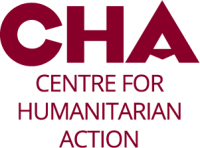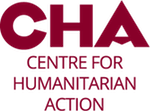| Autor*in: | Darina Pellowska |
| Datum: | 18. Oktober 2024 |
Scroll down to find an audio version of the blog!
Germany’s recently released new humanitarian strategy marks an important step in shaping its global humanitarian agenda. As discussed by Ralf Südhoff in his recent blog post, the strategy sets out to emphasise principled assistance, efficiency, and system transformation, with “localisation” as a key priority. But the shift towards aligning humanitarian aid with national interests and security concerns, together with the dramatic 53% budget cut weakens Germany’s role as a humanitarian leader. Without clear prioritisation and adequate resources, Ralf argues, Germany risks losing its influence as both a payer and a player in global humanitarian affairs. In this blog post, I show how these effects become evident when considering how the commitments to localisation made in the new strategy (fail to) translate into concrete policy actions.
Partnership: Promises, again
Compared to the strategy 2019-2023, Germany’s new humanitarian strategy emphasises its commitment to so-called “localisation” more strongly by underlining its ambitions to meaningfully include local actors into global humanitarian frameworks. It highlights the important role of local actors, particularly women-led organisations, especially in sectors like gender-based violence and climate action.
However, while strongly calling for „acting more locally“, the strategy’s concrete policies maintain a hierarchical structure that keeps local organisations as junior partners. For the German Federal Foreign Office (GFFO), international organisations remain their primary partners. Although local actors should “participate” in the design and implementation of humanitarian responses, they are not meant to lead, according to the strategy. This perpetuates unequal power dynamics, where local knowledge and leadership are not fully trusted or even entrusted with independence. Local actors are rather framed as participants who require support and oversight.
Direct Funding: Cautious first steps
While most funds are still to be distributed through intermediaries, the strategy’s renewed pledge to direct 25% of German humanitarian funds to local partners appears assuring of Germany’s localisation commitment. GFFO takes first steps to deliver upon this commitment, when outlining plans to expand the direct funding of small local organisations by German embassies. Still, such cautious first steps are falling behind more progressive strategies, such as Sweden’s SIDA humanitarian strategy (2021-2025), where the Swedish government committed to remove multiple intermediary layers and provide direct funding to local actors wherever possible, foster long-term partnerships and empower local organisations to lead in humanitarian responses.
Accountability: Yes, but without benchmarks (yet)
In its strategy, Germany speaks of „reliable, long-term partnerships“ with local actors, too, and requires its direct international partners to work with local actors, passing on an „appropriate portion“ of administrative costs. The vague language and lack of specificity around “working with” and „appropriate“ portions, however, suggest a remaining imbalance in these partnerships, leaving local organisations dependent on the will and commitment of internationals.
This falls behind requests of NEAR, Charter for Change, and A4Ep for more concrete accountability. Other policies, for example by the UK, Denmark, and ECHO provide (some) more detailed guidance on passing overhead costs to local organisations. Still a bit vague, ECHO at least asks for “equitable” sharing of administrative costs, acknowledging the high importance of ODA costs for local organisations. The UK even provide a clear number: At least 10 percent overhead costs must be provided to local partners. While this is certainly a low threshold, it still leverages tangible accountability.
German plans to ask international partners to provide 2 percent overhead costs of total project costs to locals and to fund this as a top up to their regular 7 percent for internationals could be promising here – although these plans are not part of the strategy.
Capacity Strengthening: One-sided support
The new strategy goes beyond highlighting that humanitarian action should be as locally driven as possible. It aims to effectively integrate local actors into the international humanitarian system, such as UN-coordinated plans. Fostering their participation, the strategy grants increased training and inclusion opportunities for local partners, especially in project planning and implementation phases – although this it is understood as a task to be primarily executed by international partners . This is a further development compared to the 2019-2023 strategy which recognized the contributions of local actors, but did not articulate such a commitment to effective strengthening of local actors in humanitarian project design and execution.
Still, rather than recognising local actors‘ existing strengths, the strategy focuses only on strengthening the capacities of local organisations so that they can better comply with GFFO’s rules and regulations. Germany, on the other side, does not aim to better cater to local realities by changing its own approach.
SIDA’s strategy, at least in its outline recognises that local actors bring valuable expertise to the table and fosters tools and activities that amplify voices from the Global South in the international humanitarian ecosystem, such as peer-to-peer learning and sharing of best practices among local organisations (South-South cooperation). There is no mention of such instruments that strengthen local positions and challenge the predominant “humanitarian club” in the GFFO strategy.
Risk Sharing: More cautious first steps
When introducing the Risk-Sharing Framework, the German strategy builds on state-of-the-art global humanitarian policy developments. However, while there is mention of risk prevention in collaboration with local actors, the responsibility for materialising risks remains with the international intermediaries, leaving local organisations to comply with externally set compliance frameworks. This approach contrasts with more progressive risk-sharing frameworks seen, for example in the Netherlands. Still, there is hope that with the planned risk sharing pilot projects, the German understanding of a more equitable sharing on risks among humanitarian actors will gradually grow.
What does this mean for intermediaries, committed to strengthen local leadership?
While reaffirming their central role in its international humanitarian response, Germany outsources localisation to its international partners. Acting as a „buffer,“ they are expected to pass on funds, provide capacity-strengthening, and absorb financial and operational risks. This imposes significant operational challenges to international GFFO partners, as they must navigate complex commitments and compliance frameworks, managing relationships with both GFFO and local actors. Meanwhile, the power imbalance remains, and local organisations are left in a dependent, supporting role.
Conclusion: A Tale of Two Strategies
Germany’s approach to localisation echoes challenges seen in other national strategies. The overall reliance on international partners as powerful intermediaries, its wide-stretched lack of concrete measures and tools, and its donor-centric approach show a reluctance to fully embrace locally led humanitarian action that is not unique to Germany. It can be found, for example, in the UK’s humanitarian strategy as well. Meanwhile, the policies of the Netherlands, Sweden and the EU include slightly more meaningful steps toward localisation by including more robust measures for direct funding and partnership-building with local actors.
But despite these common challenges, Germany’s strategy also shows potential. It marks (cautious) first steps forward in recognising the importance of local actors in humanitarian action, particularly in cross-sectoral approaches.
For Germany to truly be an „Ideengeber“and “Gestalter” (provider of ideas and innovator; p. 2) in the humanitarian sector, it must, however, take bolder steps to align its policies with the transformative commitments made in the strategy. To do so, it does not necessarily need more money – after all, locally led humanitarian action has proven to be highly cost-efficient. It just needs more courage to implement some of the well-known and researched tools and mechanisms developed by START Bangladesh, RINGO and others. In this way, Germany could become a player, despite no longer being one of the major payers.
________
Darina Pellowska ist wissenschaftliche Mitarbeiterin am Centre for Humanitarian Action (CHA).
Listen to the Blog (created with Murf AI):




Relevante Beiträge
Weder Player noch Payer?
26.09.2024Lokalisierung
Deutsche humanitäre Hilfe